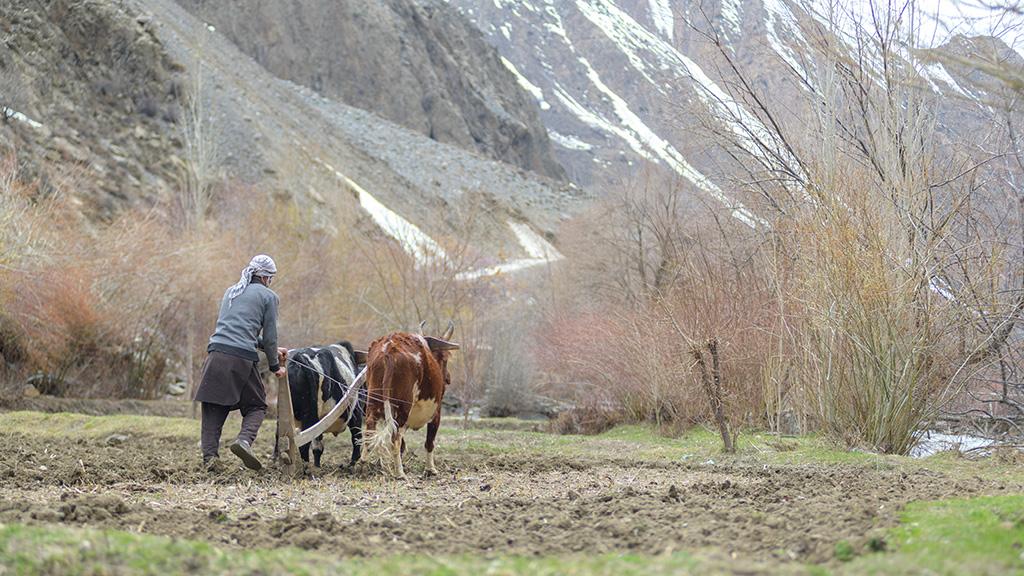BAKU, Azerbaijan, October 29. The Green Climate Fund (GCF) has allocated $250 million for the Asian Development Bank's (ADB) Glaciers to Farms program, Trend reports via the ADB.
The primary objective of the flagship adaptation program is to establish sustainable water and agricultural systems for vulnerable communities residing in glacier-dependent regions of Central Asia, the South Caucasus, and Pakistan.
Funding from the Green Climate Fund (GCF) will be provided predominantly in the form of grants and allocated to a series of projects identified by the participating countries, complemented by the Asian Development Bank’s (ADB) $3.25 billion in funding over the next decade. These investments will target efficient irrigation systems, reservoir construction, and watershed management, thereby enhancing agricultural productivity in the context of increasing droughts and floods resulting from accelerated glacier melting.
“The rapid decline of glaciers represents one of the most complex development challenges confronting our region,” stated Yasmin Siddiqi, ADB Director for Agriculture, Food, Nature, and Rural Development.
“We need practical, scalable, and science-based solutions to help communities adapt. With the catalytic support of the GCF, the Glaciers to Farms initiative will help the region move away from piecemeal projects and toward systemic, long-term sustainability that protects people and livelihoods now and for generations to come,” he added.
The Glaciers to Farms initiative covers nine of ADB’s developing member countries - Azerbaijan, Armenia, Georgia, Kazakhstan, Kyrgyzstan, Pakistan, Tajikistan, Turkmenistan, and Uzbekistan.
All of these countries rely on glaciers and snowmelt-fed rivers for agriculture, drinking water, and electricity generation.
The rapid melting of glaciers is a threat to these services and livelihoods, and a serious challenge for these countries, where nearly one in four jobs is in agriculture.
The program will focus on four glacier-fed river basins – the Naryn and Pyanj rivers in Central Asia, the Kura in the South Caucasus, and the Swat in Pakistan – and will cover an area of approximately 27 million hectares.
Approximately 13 million individuals, including farmers and vulnerable populations residing in remote mountainous regions, are expected to directly benefit from the program.
The initiative will facilitate climate and glacier assessments, which are critical for informing national development strategies and guiding investment priorities.
The program will also enhance monitoring and early warning systems, thereby enabling communities to better manage the impacts of natural hazards such as glacial lake outbursts and prolonged droughts.
The Glaciers to Farms initiative will support agricultural development, as well as adaptive social protection mechanisms and health services for vulnerable populations affected by water scarcity and extreme heat events.
Additionally, the program will strengthen the capacities of local financial institutions, with particular emphasis on supporting women-led agricultural enterprises.
“This effort will help Central and West Asian countries strengthen their adaptation planning and cooperation to manage the impacts of climate change on glacier-fed water systems,” said GCF Director of Eastern Europe, Central Asia and the Middle East Region Department Thomas Eriksson.
“This program is setting a transformative benchmark by improving data, coordination and financial readiness to achieve long-term sustainability of water and food systems in the region,” he noted.
The IMF, the world’s largest climate fund, approved concessional financing for the Glaciers to Farms program at its 43rd Board meeting on October 29.
A 2024 Glacier Risk Assessment, funded by the IMF, helped shape the program’s scientific and technical foundation.
ADB is a leading multilateral development bank supporting inclusive, resilient, and sustainable growth across Asia and the Pacific. Working with its members and partners to solve complex challenges together, ADB harnesses innovative financial tools and strategic partnerships to transform lives, build quality infrastructure, and safeguard our planet. Founded in 1966, ADB is owned by 69 members—50 from the region.
Stay up-to-date with more news on Trend News Agency's WhatsApp channel







